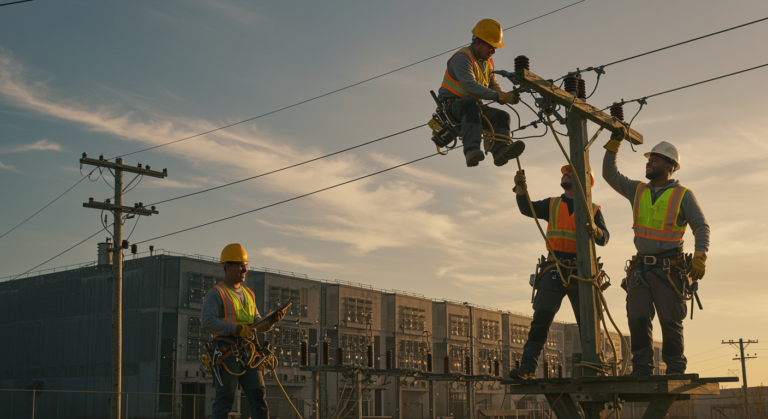
AI Tool Revolutionizes Detection of RRMS to SPMS Transition
Understanding the Challenge: Identifying MS Progression
Multiple sclerosis (MS) affects millions worldwide, creating a complex journey for patients as the disease evolves. Most begin with the relapsing-remitting form, known as RRMS, where symptoms come and go, allowing periods of recovery. But as time passes, many transition to secondary progressive MS (SPMS), a phase where disability builds steadily without clear breaks.
Spotting the RRMS to SPMS transition early is vital because it opens the door to tailored treatments that can slow progression and maintain quality of life. Imagine a patient like Sarah, who noticed subtle changes in her mobility but couldn’t pinpoint the shift—early detection could have meant less frustration and more effective interventions. This challenge highlights why tools like AI are becoming game-changers in MS care.
Introducing the Breakthrough: AI-Powered RRMS to SPMS Transition Detection
A cutting-edge artificial intelligence tool is now at the forefront of detecting the RRMS to SPMS transition, using advanced algorithms to analyze patient data with remarkable precision. By drawing from a database of over 22,000 individuals, this AI model examines everyday clinical information, such as neurological exams and MRI results, to uncover patterns that signal change.
Have you ever wondered how technology could make something as unpredictable as MS more manageable? This innovation does just that, offering neurologists a reliable way to intervene before symptoms worsen.
How the AI Model Tackles RRMS to SPMS Transition
- Pattern recognition: The AI learns from vast patient histories, identifying the subtle markers that differentiate RRMS from SPMS with impressive accuracy.
- Data-driven insights: It processes MRI scans, exam results, and treatment logs to deliver personalized assessments that go beyond human limits.
- Confidence scoring: Each output comes with a reliability score, helping doctors decide how to act on the information confidently.
This approach not only speeds up the RRMS to SPMS transition detection but also makes it more accessible in routine check-ups. What if every MS patient could benefit from such foresight?
Why Early Detection of RRMS to SPMS Transition Matters in MS
In the past, diagnosing the RRMS to SPMS transition often happened too late, sometimes years after it began, leading to missed opportunities for better management. This delay can result in ineffective treatments and faster disease progression, impacting daily life in profound ways.
With AI stepping in, neurologists can now adjust therapies proactively, potentially preserving mobility and independence longer. Think about it: catching the RRMS to SPMS transition early might mean the difference between maintaining a job and facing early retirement.
Key Benefits of This AI-Driven Tool for RRMS to SPMS Transition
- High diagnostic accuracy: Studies show around 90% success in spotting the transition, based on real-world patient data.
- Earlier intervention: It allows for timely treatment changes, even before obvious symptoms appear.
- Personalized care: By factoring in individual histories, the tool supports a customized approach to MS management.
- Streamlined workflow: It uses standard clinic data, fitting seamlessly into existing practices without extra burden.
These advantages make the RRMS to SPMS transition detection not just a possibility but a practical reality for many.
The Science Behind Revolutionizing RRMS to SPMS Transition with AI
At its core, this AI relies on machine learning to sift through complex data sets, outperforming traditional methods in predicting the RRMS to SPMS transition. Techniques like convolutional neural networks (CNNs) analyze MRI images with high sensitivity, detecting changes that might otherwise go unnoticed.
Here’s a quick look at how it stacks up against other approaches, based on recent research:
| AI Model | Sensitivity | Specificity | Area Under Curve (AUC) |
|---|---|---|---|
| MRI with CNNs | 89% | 91% | 0.96 |
| Other Imaging Methods (OCT/DTI) | 85-87% | 88-90% | 0.93-0.95 |
These metrics aren’t just abstract—they translate to real improvements in RRMS to SPMS transition detection, fostering better patient outcomes. As AI evolves, it’s clear this technology is reshaping MS diagnostics for the better.
Patient Impact: A Personalized Strategy for Managing RRMS to SPMS Transition
For those living with MS, this AI tool brings a sense of hope by personalizing care around the RRMS to SPMS transition. Patients like John, who struggled with unexplained fatigue, could see faster adjustments to their treatment plans, minimizing the risk of permanent damage.
- Early detection: The AI picks up on early signs, giving doctors a head start on optimizing therapies.
- Actionable results: With confidence scores included, patients and providers can make informed decisions together.
- Accessible technology: It works with common medical data, making advanced RRMS to SPMS transition detection available in most clinics.
This level of personalization asks: How can we ensure more people access these tools to enhance their MS journey?
Behind the Innovation: Collaborations Fueling RRMS to SPMS Transition Advances
The development of this AI model stems from global teamwork, including key contributions from institutions like Uppsala University. Partnerships, such as those between Biostate AI and the Accelerated Cure Project, leverage massive data sets to refine RRMS to SPMS transition predictions.
What sets this model apart is its forward-thinking design, built on real patient experiences rather than theoretical models.
What Makes This AI Unique in RRMS to SPMS Transition Detection
- Predictive capabilities: It forecasts the transition in real time, not just in hindsight.
- Transparent outputs: Confidence levels provide clarity for clinicians.
- Real-world foundation: Drawing from thousands of cases ensures relevance and reliability.
These features position the tool as a leader in addressing the RRMS to SPMS transition effectively.
What’s Next for AI in Handling RRMS to SPMS Transition?
The future of MS care is bright, with AI poised to make RRMS to SPMS transition detection even more precise and proactive. Innovations could incorporate genetic data for ultra-personalized treatments, adapting to each patient’s unique profile.
- Personalized treatment: By integrating genomics, AI might tailor interventions specifically for the RRMS to SPMS transition.
- Wider adoption: Expect these tools to become standard in neurology as more studies validate their effectiveness.
- Continuous improvement: Collaborations will keep pushing the boundaries, enhancing accuracy over time.
As these advancements unfold, they promise to transform how we approach the RRMS to SPMS transition.
Frequently Asked Questions
-
How accurate is the AI tool for RRMS to SPMS transition detection?
It boasts about 90% accuracy in studies, significantly outpacing traditional methods and enabling quicker responses. -
What data does the AI need for RRMS to SPMS transition analysis?
It relies on routine items like MRI scans and exam notes, making it straightforward to implement. -
Can patients directly access this RRMS to SPMS transition technology?
It’s primarily for clinicians, but patients can discuss it with their doctors for integrated care. -
Will AI replace neurologists in handling RRMS to SPMS transition?
Not at all—it’s a supportive tool that enhances human expertise without taking over.
Conclusion: Embracing a New Era for RRMS to SPMS Transition Care
AI is ushering in transformative changes for detecting and managing the RRMS to SPMS transition, empowering patients and providers alike. By prioritizing early action and personalized strategies, this technology could lead to brighter futures for those with MS.
If you’re navigating MS or know someone who is, consider talking to a specialist about these advancements. What are your thoughts on AI’s role in health care—share in the comments, explore more on our site, or spread the word to support the community.
References
- Multiple Sclerosis News Today. “New AI Tool Shown to Accurately Detect Transition from RRMS to SPMS.” Link.
- Neuroscience News. “AI Predicts MS Progression.” Link.
- ICT Health. “AI Model Recognizes Transition to Progressive MS.” Link.
- Multiple Sclerosis News Today. “Biostate AI and ACP Develop AI Models to Predict MS Progression.” Link.
- Briefing Today. “AI Enables Early Detection of MS Progression.” Link.
- Other sources, such as OM1 and Science.gov, contributed to broader insights on AI in MS research.
RRMS to SPMS transition, AI MS diagnosis, multiple sclerosis, early MS detection, MS progression AI, artificial intelligence in MS, personalized MS care, MS treatment advancements, neurology AI tools, detecting MS progression







